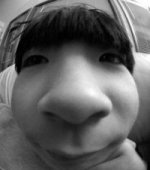ampguy
Veteran
Ok
Ok
I understand what you're saying, and see it in your example. You are saying that one can get the same perspective, basically if you use a perfect lens for the wide, and shoot straight on.
I'm saying that in real life, shooting medium to extreme angles, etc., that the wide is not the same perspective as a longer lens cropped - it's only the same area or dimensions, Also, I'm not interested in photoshopping the images to correct them, I'm talking about real life lenses and no photoshopping.
Ok
I understand what you're saying, and see it in your example. You are saying that one can get the same perspective, basically if you use a perfect lens for the wide, and shoot straight on.
I'm saying that in real life, shooting medium to extreme angles, etc., that the wide is not the same perspective as a longer lens cropped - it's only the same area or dimensions, Also, I'm not interested in photoshopping the images to correct them, I'm talking about real life lenses and no photoshopping.
The aspect ratio of legs to body is because you shoot down from the top and compare things that are not in the center of the frame. That's normal with a wideangle, but when you crop you crop away these portions. You have to crop from the center, just like a digital camera sensor would.
For this kind of comparison, you mustn't move the camera between shots, and you must crop from the center. Here, you would have had to kneel down so that the boy is in the center.
Philipp







